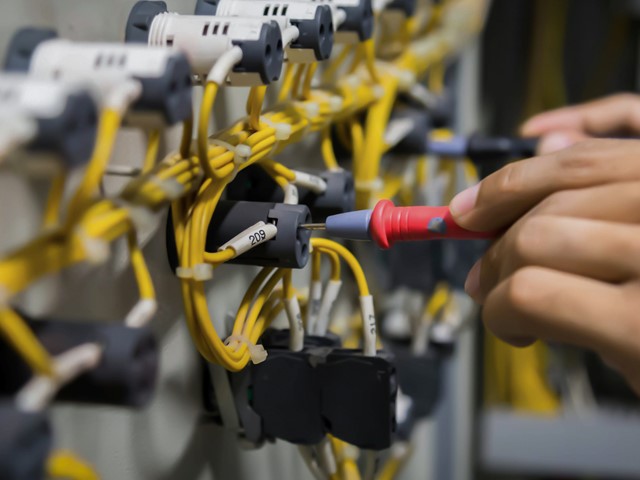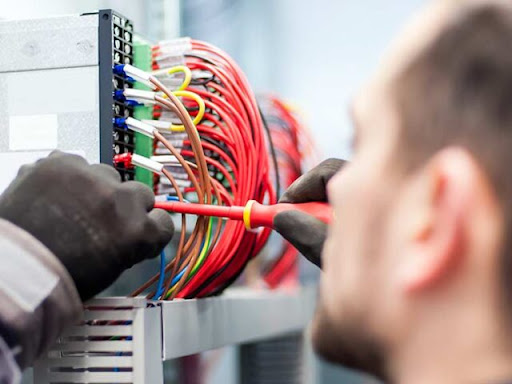
During an Electrical Service Call
When it comes to maintaining the safety and functionality of your home, electrical systems are crucial. Whether you’re dealing with flickering lights, frequent circuit breaker trips, or a total power outage, scheduling an electrical service call is a necessary step. But what exactly happens during these appointments? Understanding the process can help you prepare and ensure that the visit goes as smoothly as possible. Here’s a detailed look at what to expect during an electrical service call.
1. Preparing for the Appointment
Before the electrician arrives, there are a few things you can do to prepare. Ensure that the area where the electrician will be working is accessible and clear of any obstructions. If the issue is in a specific room or area, it’s helpful to make sure that the electrician has enough space to work safely. You should also make a list of any specific problems or symptoms you’ve noticed, such as flickering lights or outlets that don’t work. This information will help the electrician diagnose the issue more quickly.
2. Arrival and Initial Assessment
When the electrician arrives, they’ll start by introducing themselves and asking a few questions to better understand the problem. They may want to tour the area where you’ve noticed issues to get a clearer picture of what might be wrong. This initial assessment helps them determine the scope of the work and any tools or materials they might need. If you haven’t already done so, this is a good time to describe any specific symptoms you’ve observed.
3. Inspection and Diagnosis
The electrician will then conduct a thorough inspection of your electrical system. This may involve checking circuit breakers, outlets, switches, and wiring. Depending on the issue, they might use diagnostic tools such as a multimeter to test voltage levels or continuity. For more complex issues, such as faulty wiring or issues inside walls, they might need to use specialized equipment or even cut into drywall to gain access.
4. Providing a Detailed Explanation
Once the electrician has completed their diagnosis, they will explain their findings to you. They should provide a detailed account of what the problem is, why it’s occurring, and how it can be fixed. They’ll also outline the steps involved in the repair process and offer an estimate for the cost. This is a good time to ask questions if you’re unsure about anything, including why a particular repair is necessary and what options are available.
5. Performing the Repairs
If you agree to proceed with the repairs, the electrician will get to work. The scope of the repair will depend on the issue but may involve tasks such as replacing faulty wiring, installing new outlets, or fixing a malfunctioning breaker panel. During this process, it’s important to stay out of the way and allow the electrician to focus on their work. They will typically take measures to ensure your home remains safe and minimize any disruption. Are you looking for the best electrical company near me? Check out their page to learn more.

6. Testing and Verification
Once the repairs are completed, the electrician will test the system to ensure everything is functioning properly. This might involve turning the power back on and checking various components to make sure they’re working as expected. They may also run tests to ensure that the issue has been fully resolved and that there are no lingering problems.
7. Final Inspection and Cleanup
After confirming that the repair is successful, the electrician will conduct a final inspection. They’ll ensure that all work has been completed to a high standard and that everything is in order. Additionally, they will clean up the work area, removing any debris or materials used during the repair. It’s always a good practice to review the area yourself to ensure that everything is satisfactory.
8. Reviewing the Work and Payment
Before leaving, the electrician will provide you with an invoice detailing the work completed and the associated costs. Make sure to review this document and ask any questions if you’re unsure about any charges. Most electricians accept various forms of payment, including credit cards, checks, or cash. If you’re satisfied with the service, this is also a good time to discuss any future maintenance needs or recommendations for keeping your electrical system in top shape.
9. Follow-Up
In some cases, the electrician might offer follow-up services or check-ins, especially if the issue was particularly complex. They might provide advice on how to monitor the system or suggest preventative measures to avoid future problems. It’s a good idea to take note of any recommendations they make and consider scheduling regular inspections to maintain the safety and efficiency of your electrical system.
Conclusion
An electrical service call can seem daunting, but understanding what to expect can make the experience much smoother. From the initial preparation to the final inspection, knowing the steps involved helps you stay informed and engaged in the process. Remember, a professional electrician is there to ensure that your electrical system is safe, efficient, and reliable. By following these guidelines and communicating openly with your electrician, you can ensure that your service call goes as seamlessly as possible.
